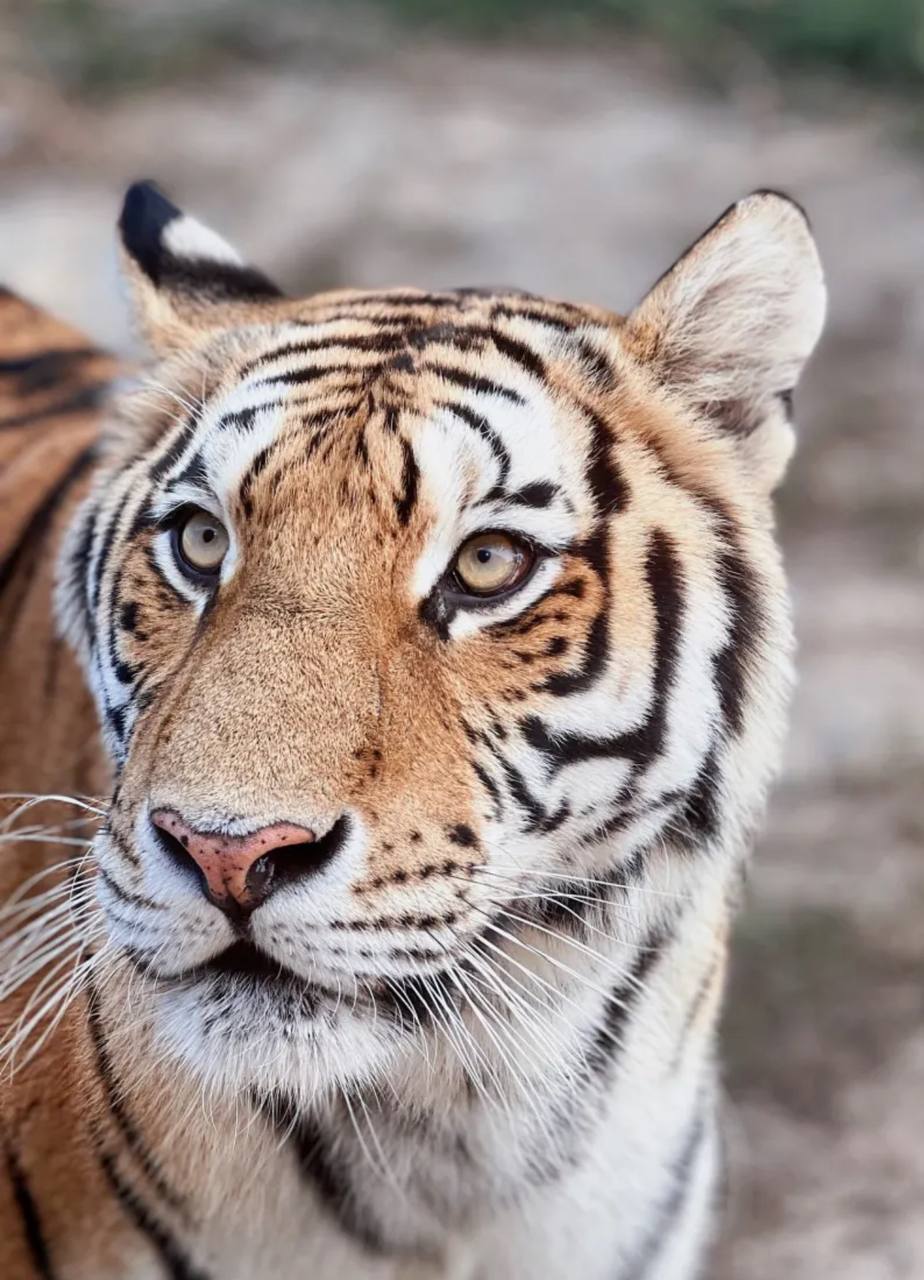The Siberian Tiger Park in Harbin, also known as the Siberian Tiger Forest Park, is one of the largest natural reserves for Siberian tigers in the world. Established in 1996, it is located on the north bank of the Songhua River near Sun Island, about 15 kilometers from downtown Harbin.
The park was created with the goal of protecting the endangered Siberian tiger, which is one of the most endangered species of tiger in the world.
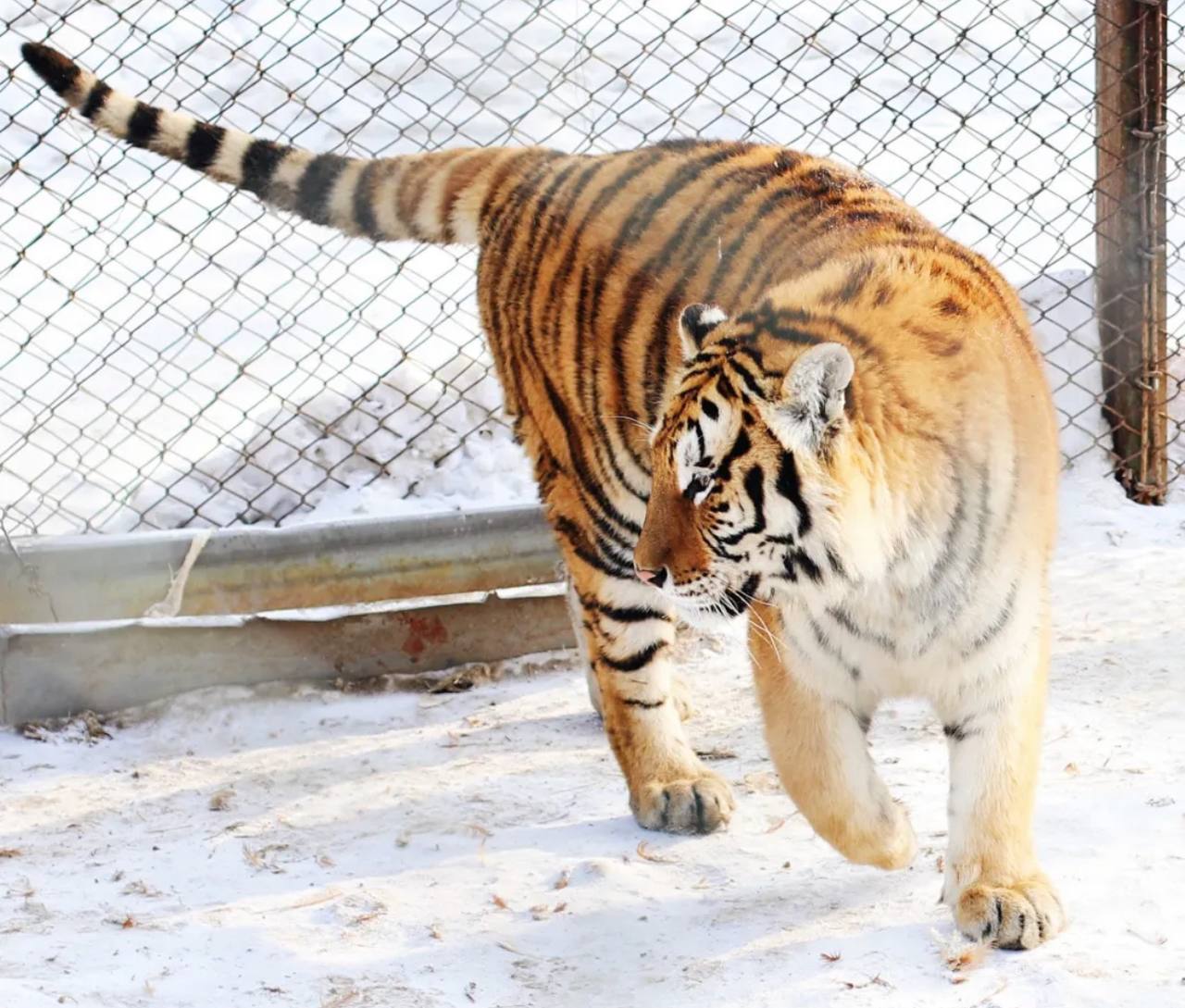
Recommended:
What is Siberian Tiger Park
The Siberian Tiger Park covers an area of approximately 1.44 million square meters (about 355 acres) and is home to more than 500 Siberian tigers, along with a few other species of big cats such as lions and ligers (lion-tiger hybrids).
The park is designed to allow tigers to roam freely in a semi-wild environment, providing a more natural habitat compared to traditional zoos. Visitors are able to observe the tigers up close from inside secure vehicles.
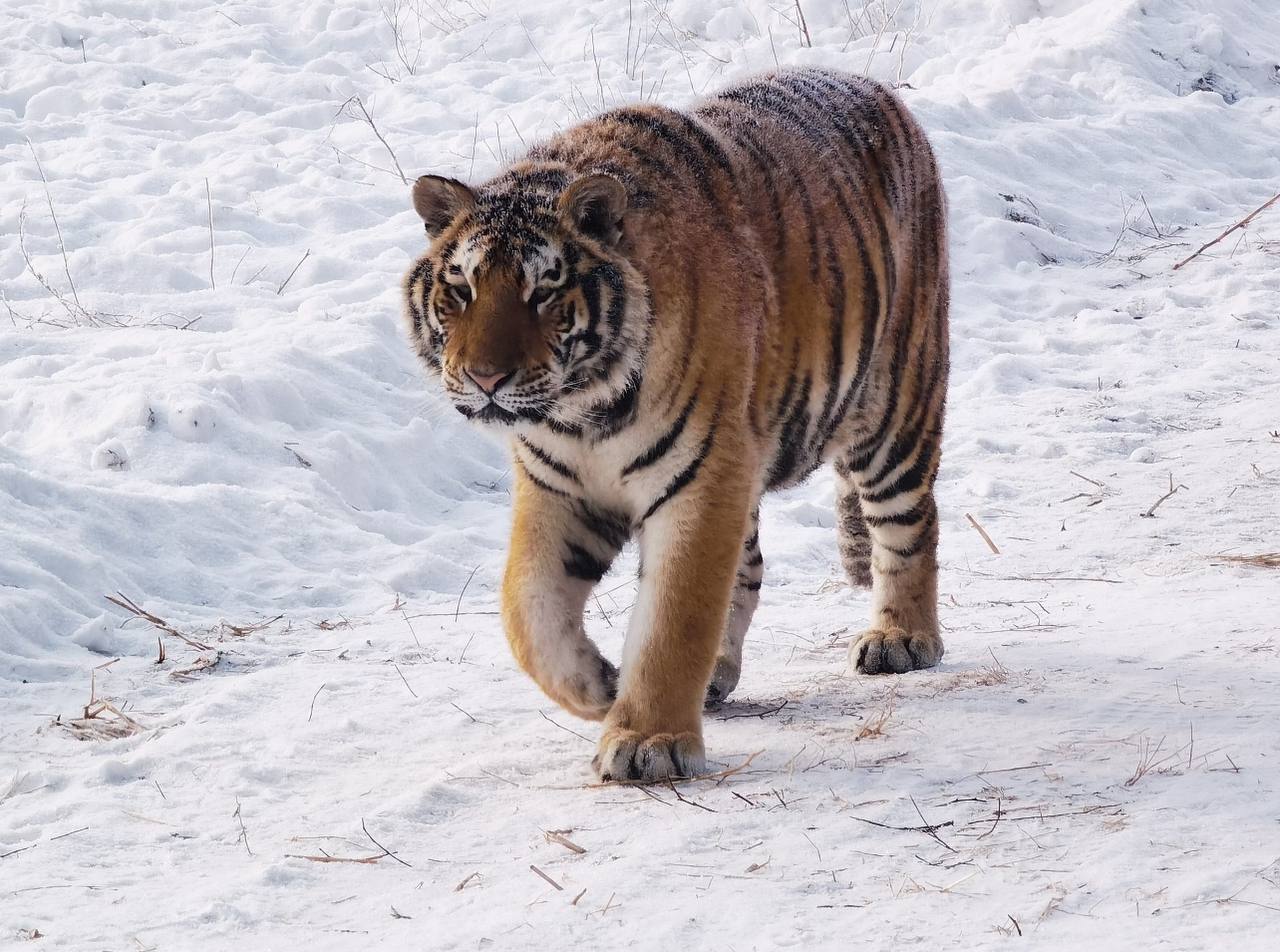
Siberian Tigers
Siberian tigers, also known as Amur tigers, are the largest tiger species and are native to the Russian Far East, as well as parts of northeastern China. They are known for their large size, powerful build, and thick fur, which helps them survive the harsh, cold climates of the region.
Due to habitat destruction, poaching, and other threats, Siberian tigers are listed as endangered, with only around 500-600 individuals left in the wild. The Siberian Tiger Park plays a key role in breeding and conserving the species.
Key attractions and activities

Tiger Viewing
One of the main attractions at the park is the opportunity to see Siberian tigers up close. Visitors tour the park in specially designed vehicles, such as caged buses or jeeps, which allow them to safely travel through areas where the tigers roam freely.
The tigers often come very close to the vehicles, giving visitors the chance to observe their behaviors, hunting instincts, and interactions with one another. This makes the park an exciting experience for animal lovers and wildlife enthusiasts.
Predator Feeding

A popular, though controversial, activity at the park is the predator feeding sessions. Visitors have the option to purchase live animals, such as chickens, ducks, or goats, which are released into the tiger enclosures to simulate the tigers’ natural hunting behaviors.
The feeding sessions are intended to provide enrichment for the tigers, helping them maintain their instincts as predators. However, some visitors may find this practice unsettling, as it involves watching live animals being caught by the tigers.
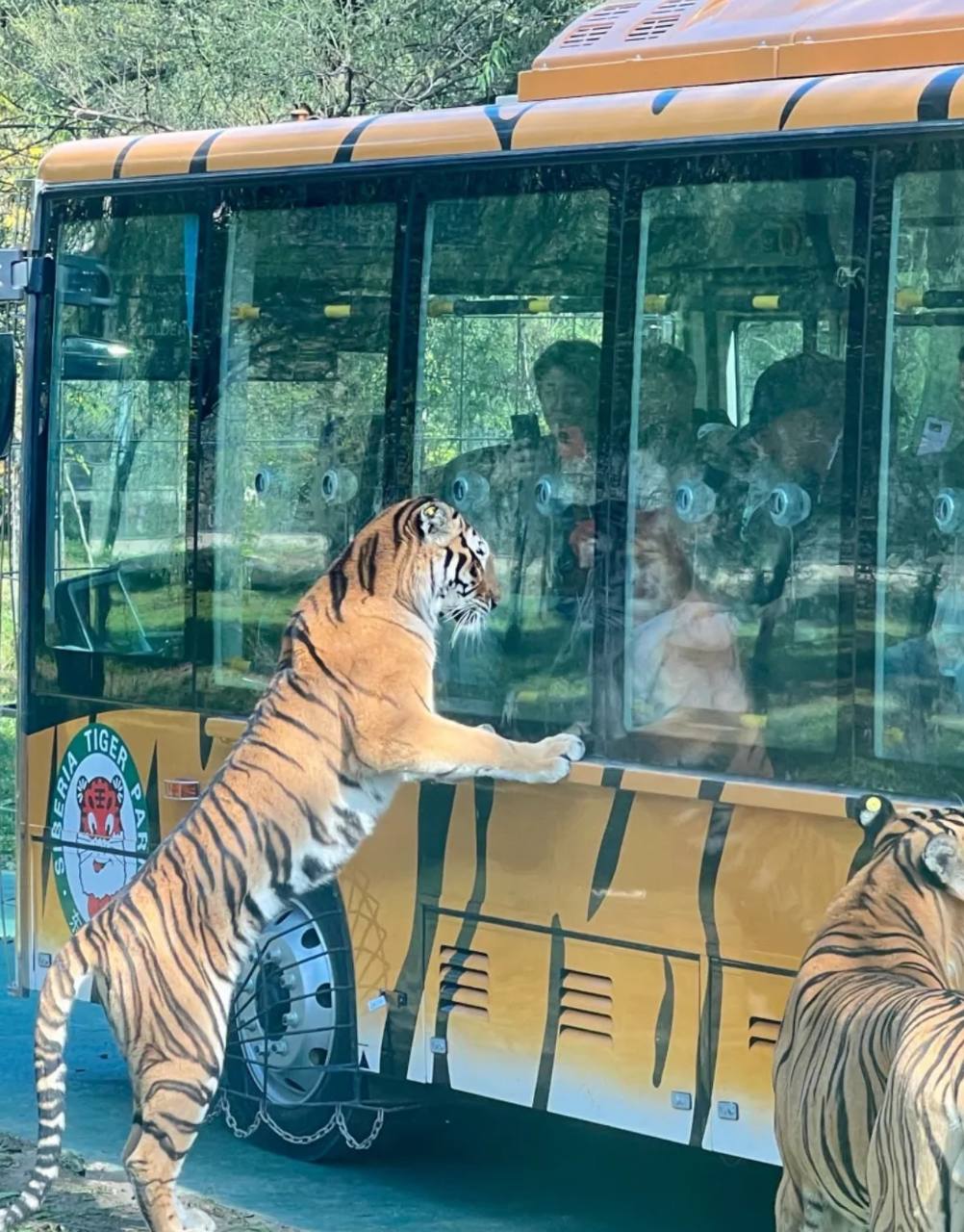
Breeding Program and Tiger Cubs
The Siberian Tiger Park is heavily involved in a breeding program aimed at increasing the population of the endangered tigers. In certain parts of the park, visitors can see tiger cubs, which are born and raised as part of the conservation effort.
The park sometimes offers opportunities for visitors to take photos with the tiger cubs, though this practice is generally limited and regulated to ensure the welfare of the animals.
Other Big Cats in the Siberian TIger Park
In addition to Siberian tigers, the park is home to several other big cats, including:
- Bengal tigers
- Lions
- White tigers
- Ligers (a cross between a lion and a tiger)
These animals are also housed in various sections of the park, allowing visitors to see a wide variety of large predators in one place.
Conservation and research
The Siberian Tiger Park is not just a tourist attraction, but also plays a critical role in conservation efforts aimed at preserving the Siberian tiger population. The park’s breeding program has been successful in raising tiger numbers and conducting research on the species.
The park’s scientists work on issues such as genetic diversity, ensuring that the tigers bred in captivity maintain a healthy and diverse gene pool. Some tigers from the park have been reintroduced to the wild, although reintroduction efforts are challenging and require careful planning.
How to visit Siberian Tiger Park
Visitors typically tour the park in specially designed vehicles, such as safari-style buses or enclosed jeeps, which offer protection while allowing close encounters with the tigers. The park is divided into several zones based on the tigers’ age and behavior, including areas for younger tigers, adult tigers, and breeding tigers.
- Some sections of the park are designed like open plains, where visitors can observe tigers running, playing, and interacting in an environment that closely resembles the wild.
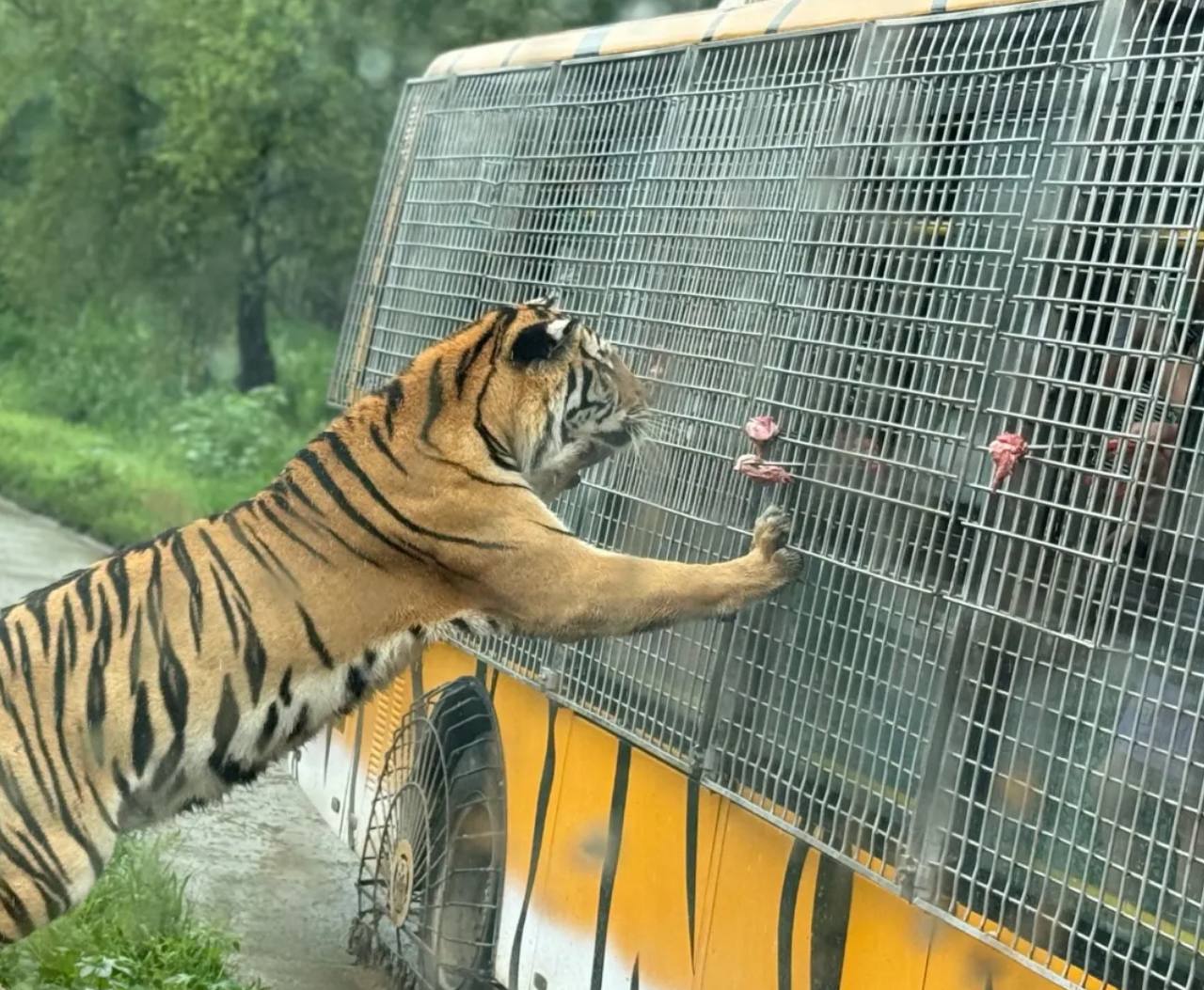
More ideas for your visit:
There are two types of buses available, and your choice depends on whether you want to focus on taking great photos of the tigers or experiencing the feeding. If you choose the feeding bus, which is a fun and exciting experience (an additional 100 RMB is required to purchase food), the bus is covered with mesh, making it difficult to capture good pictures.
However, if your priority is to get clear, unobstructed photos with a better view of the tigers, it’s best to take the standard bus with glass windows.
- Location
The Siberian Tiger Park is located near Sun Island, on the outskirts of Harbin. It is easily accessible from the city center by taxi or public transportation.
- Ticket Prices
Admission prices typically range from ¥90 to ¥120 ($15-$20), depending on the season and the type of tour you choose (e.g., basic tour or one with additional feeding activities).

- Opening Hours
The park is usually open daily from 8:30 AM to 5:00 PM, though opening times may vary during holidays or special events. It’s advisable to visit earlier in the day to avoid crowds and to have more time for a complete tour.
- Best time to visit
The park can be visited year-round, but the best time is during the winter months (December to February), when Harbin is already a major destination due to the Harbin Ice and Snow Festival. The sight of the tigers in a snow-covered environment makes for a spectacular experience.

Visitor tips
Dress warmly in Winter: Harbin can get extremely cold in winter, so visitors should dress in layers and wear insulated clothing, hats, gloves, and boots.
Photography: Bring a good camera with a zoom lens to capture close-up shots of the tigers.
Ethical Considerations: Some visitors may find the practice of live animal feeding disturbing. It’s advisable to consider your personal comfort level with this aspect before participating.
Plan for Time: The park is large, and the tours can take several hours. It’s worth setting aside a half-day to fully enjoy the experience.
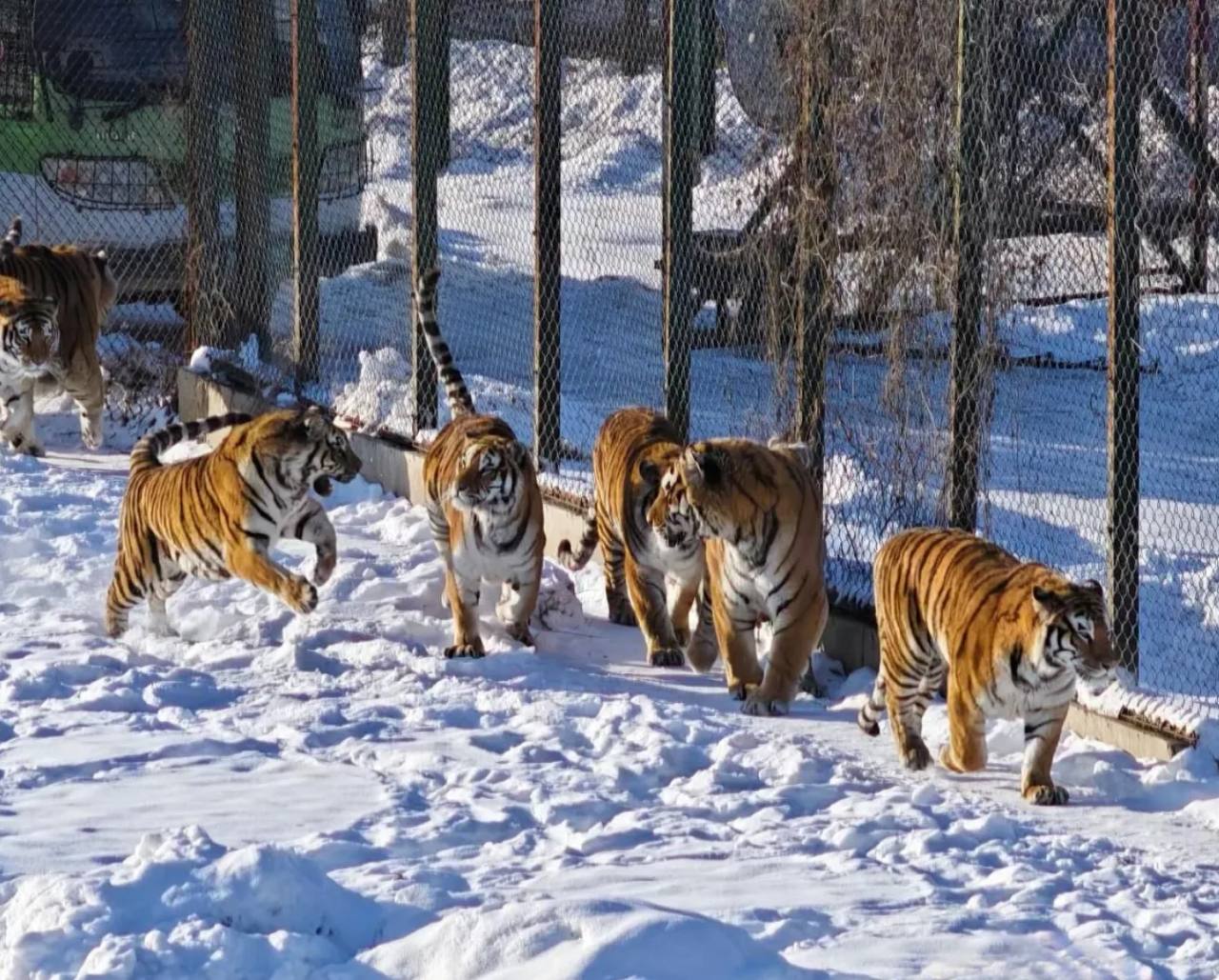
Cultural Importance
The Siberian tiger is a symbol of strength and power in Chinese culture, and efforts to conserve this species have national and global significance. The Harbin Siberian Tiger Park contributes to this cause by not only protecting the species but also raising awareness about the importance of conservation.
In Chinese culture, the tiger is one of the twelve zodiac animals and is often associated with bravery and protection. The Siberian Tiger Park reflects both China’s reverence for this iconic animal and its commitment to saving it from extinction.

Criticism and controversies
While the park is a key player in tiger conservation, it has faced criticism for certain practices, including the live animal feedings and breeding of hybrid animals (such as ligers). Animal rights organizations have raised concerns about the ethical implications of these activities.
In response, the park has made efforts to highlight its role in conservation and education, while also gradually reducing controversial practices.
